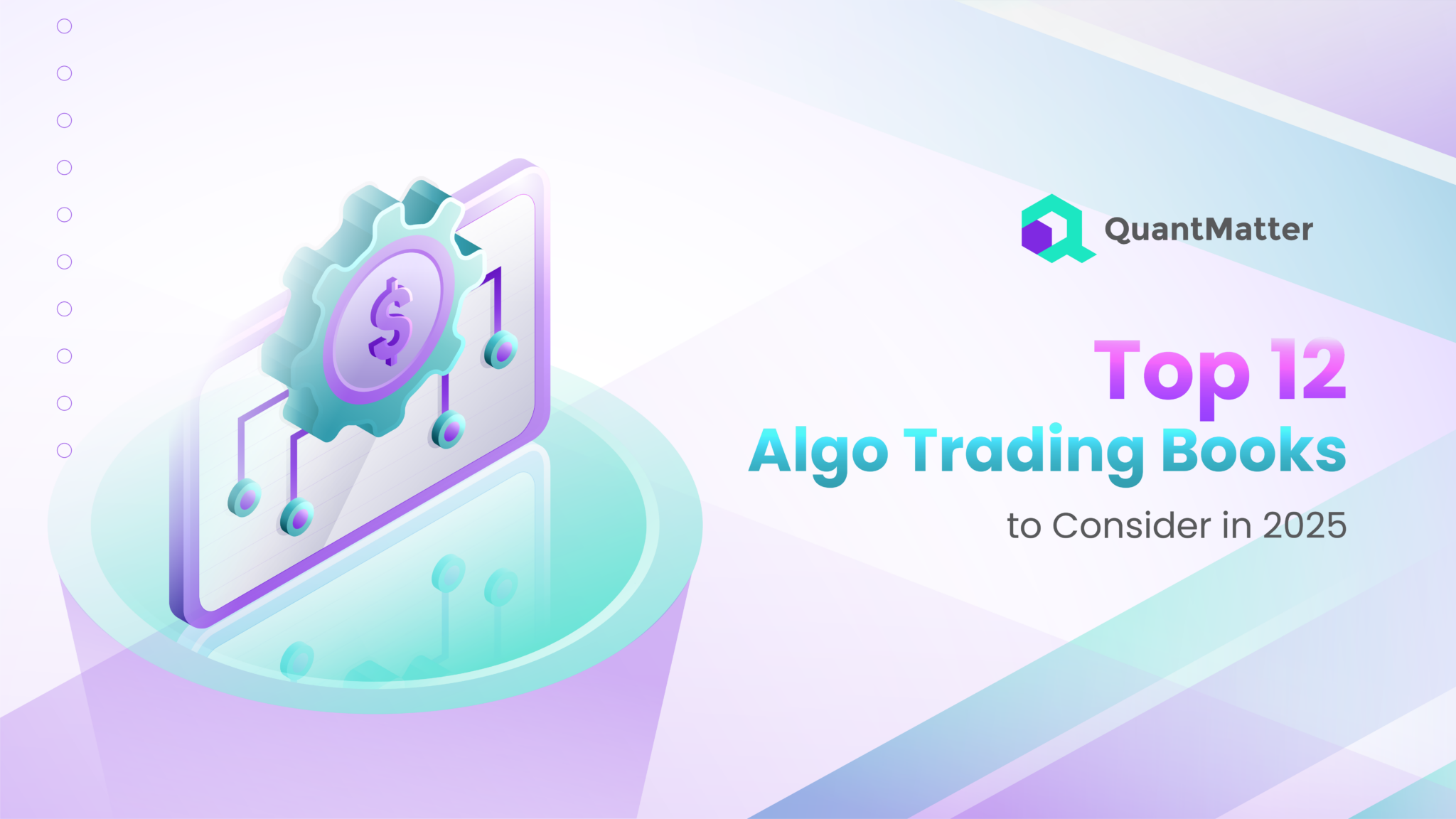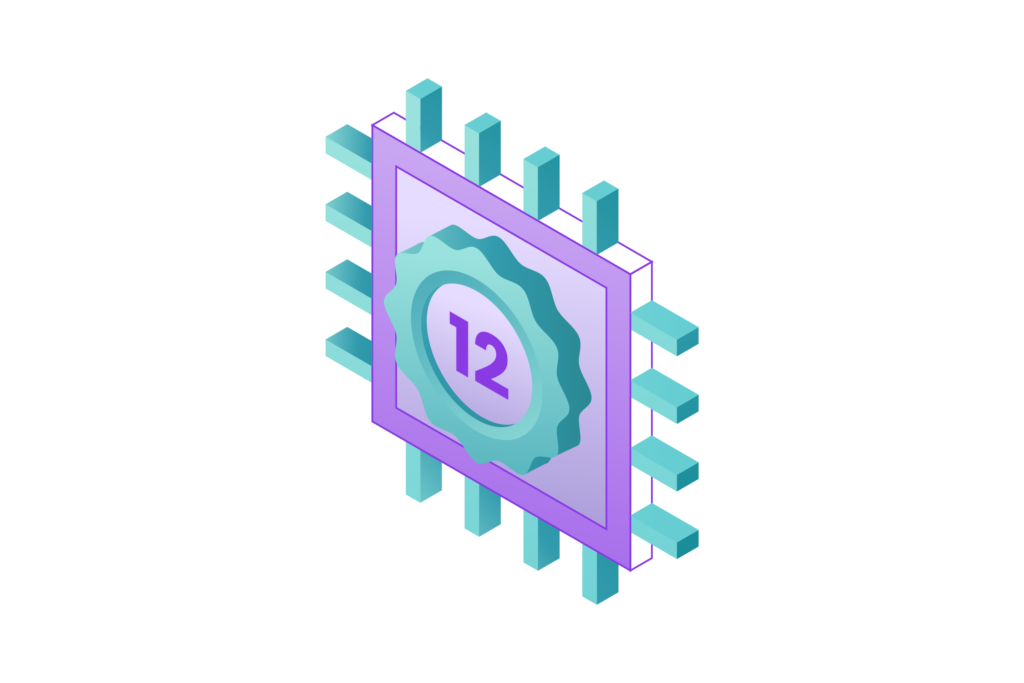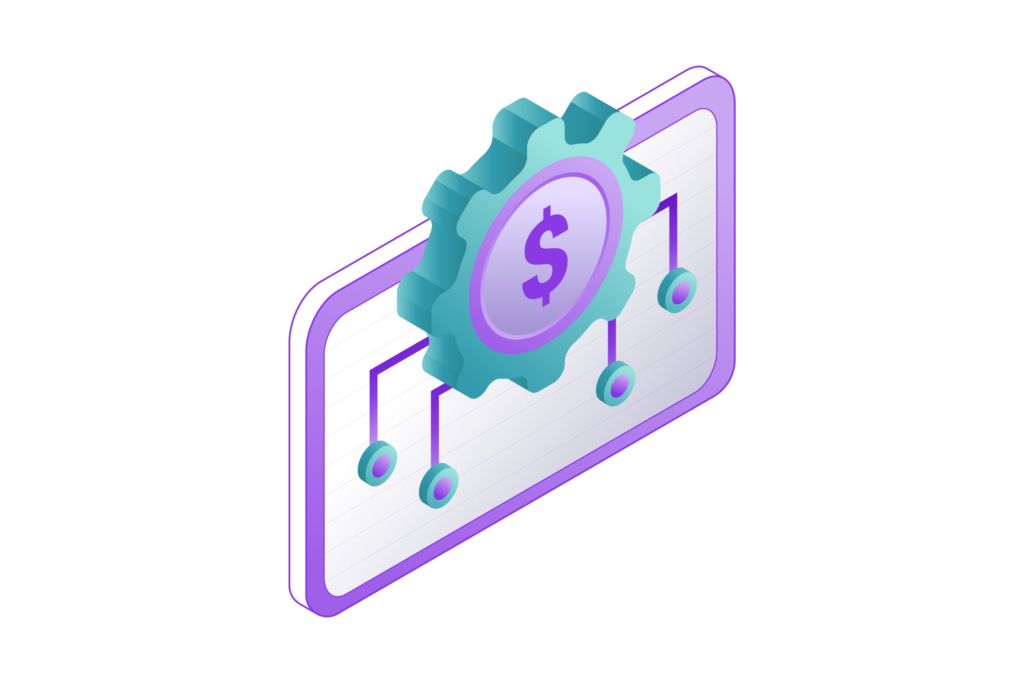
Algorithmic trading, or algo trading, is no longer just for hedge funds and investment banks. Thanks to open-source tools, online platforms, and widespread access to data, more individual traders are entering the space. But if you’re new or looking to sharpen your skills, you’ll need more than just software—you’ll need solid knowledge. Books remain one of the most reliable ways to get that.
There’s no shortage of content online, but a well-written book can provide structured learning and deeper insights. Whether you’re looking to build strategies, code your first bot, or understand the math behind models, the right book can speed up your learning curve.
In this article, we list the top algo trading books to consider in 2025. We also explain what to look for in a book, how to get started in this field, and what mistakes to avoid.
What to Look for in an Algo Trading Book
With so many algo trading books out there, picking the right one can save you time and help you avoid frustration. The key is knowing what to look for based on your needs.
- Level of experience: Some books are written for complete beginners, while others assume a background in math, coding, or finance. Make sure the book matches your current skill level.
- Focus area: Algo trading covers a wide range of topics—strategy development, backtesting, high-frequency trading, risk management, and more. Decide what you want to learn first, and choose a book that focuses on that topic.
- Practical examples: Books that include Python or R code, real data examples, and step-by-step projects are often more helpful than those that focus only on theory.
- Author credibility: Authors with real-world trading or academic experience bring more value. Look for those who’ve built systems, worked in the industry, or published peer-reviewed research.
- Recent updates: Algo trading evolves quickly. Books published or updated in the last few years will cover more relevant tools and market behavior.
Taking a few minutes to match the right book to your current goals can make a big difference. A well-chosen book can help you learn faster, avoid confusion, and move confidently into the world of algorithmic trading.
Also Read: What Are Algorithmic Strategies? Learn to Solve Problems Effectively
Top 12 Algo Trading Books to Consider in 2025

In 2025, the field of algorithmic trading continues evolving rapidly, blending finance, computer science, and data analytics into a powerful toolkit for traders and quants alike. Whether you’re a beginner looking to automate basic strategies or a seasoned quant exploring high-frequency models and machine learning, there’s always more to learn. Books remain one of the most valuable resources, offering deep dives into strategy, code, and the minds behind successful systems. This curated list gathers some of the best reads for algo traders in 2025—books that inform, inspire, and sharpen your edge. Let’s jump right into the top 12 algorithmic trading books worth your time this year.
1. Algorithmic Trading: Winning Strategies and Their Rationale – Ernest P. Chan
Dr. Chan delivers a deeply practical book rooted in real trading experience. He shares strategies based on mean reversion and momentum, along with their theoretical foundations. Readers benefit from code samples, risk metrics, and tips on execution. While not beginner-level, it’s a go-to manual for traders wanting to improve their systematic trading edge. The book focuses on strategies that can be implemented using retail platforms like Interactive Brokers.
| Pros | Cons |
| Includes real-life trading strategies | Not beginner-friendly |
| Code examples provided for practical learning | Assumes prior market knowledge |
| Good for understanding system design | Some strategies require advanced math |
2. Quantitative Trading – Ernest P. Chan
Aimed at newcomers, this book explains the basics of designing and testing trading systems. Chan focuses on quant strategies that retail traders can execute with limited capital. Topics include data sourcing, backtesting pitfalls, and managing slippage. It’s light on theory but strong in hands-on application. If you’re just stepping into algorithmic trading, this is a great place to start.
| Pros | Cons |
| Beginner-accessible introduction | Lacks depth in machine learning topics |
| Covers risk management basics | Python code may be outdated |
| Helpful insights on backtesting | More focus on retail perspective |
3. Inside the Black Box – Rishi K. Narang
This book unpacks the mysterious world of black-box quant trading in an easy-to-understand format. Narang offers insights into how hedge funds design, test, and deploy complex trading systems. It’s more about understanding concepts and infrastructure than writing code. This read is perfect for allocators, investors, or newcomers who want to peek under the hood. However, traders expecting strategy breakdowns may find it too abstract.
| Pros | Cons |
| Explains HFT in simple terms | Doesn’t include practical code |
| Includes real-world hedge fund examples | More conceptual than tactical |
| Insightful for fund allocators | May feel repetitive to pros |
4. Learn Algorithmic Trading – Sebastien Donadio & Sourav Ghosh
A practical book aimed at Python-savvy readers, this guide covers strategy implementation using real-world datasets. It walks through momentum, volatility, and machine learning-based strategies in a modular structure. Each chapter builds upon a live project, pushing readers toward independent model design. It’s geared toward those with a solid foundation in Python and statistics. For traders ready to code their own systems, this is a goldmine.
| Pros | Cons |
| Python-heavy with hands-on guidance | Assumes coding experience |
| Great for building your own trading bots | Requires strong math foundation |
| Covers volatility and stat arb strategies | Dense for casual readers |
5. The Man Who Solved the Market – Gregory Zuckerman
This biography covers the legendary Jim Simons and his firm, Renaissance Technologies. More than a trading book, it’s a gripping story about the man who changed finance using math and algorithms. Readers learn how academic approaches translated into the world’s most successful hedge fund. While not a technical manual, it sheds light on the mindset behind quantitative breakthroughs. It’s both entertaining and enlightening.
| Pros | Cons |
| Engaging storytelling | Not a technical manual |
| Biographical insight into Jim Simons | Limited practical application |
| Illustrates evolution of quant finance | Focuses more on history than strategy |
6. Advances in Financial Machine Learning – Marcos López de Prado
De Prado introduces cutting-edge tools for building robust models in financial data environments. He highlights how overfitting, data snooping, and poor cross-validation plague naive models. Practical code is included, especially for time-series analysis and feature engineering. It’s a dense, academic book, best suited for intermediate to advanced practitioners. You’ll leave with powerful tools—but only if you have the background to wield them.
| Pros | Cons |
| Covers real-world ML pitfalls in finance | Requires deep statistical knowledge |
| Includes Python code for time-series features | Academic tone may deter casual readers |
| Challenges traditional finance models | Not for beginners |
7. Machine Learning for Asset Managers – Marcos López de Prado
This compact book introduces financial machine learning concepts in an accessible way for portfolio managers. It strips away coding and focuses on conceptual clarity. You’ll find topics like covariance estimation, clustering, and label uncertainty. Think of it as a distilled version of his longer works. A great primer if you’re exploring quant finance from the asset management side.
| Pros | Cons |
| Conceptually strong and easy to digest | Lacks coding examples |
| Useful for portfolio managers | Surface-level depth on some topics |
| Focuses on asset-specific ML issues | Requires familiarity with statistics |
8. The Science of Algorithmic Trading and Portfolio Management – Robert Kissell
This book bridges the gap between algo trading and portfolio management. It dives into execution algorithms, transaction cost analysis, and the mathematics of order routing. For professionals in institutional trading desks, it’s incredibly relevant. Retail traders may find it overwhelming due to its breadth and jargon. Still, it’s an authoritative resource on the intersection of quant and execution.
| Pros | Cons |
| Comprehensive treatment of execution logic | Heavy for beginner readers |
| Valuable for institutional traders | Requires background in finance |
| Includes advanced analytics and TCA methods | Less suited for Python coders |
9. Algorithmic and High-Frequency Trading – Álvaro Cartea et al.
This academic book gives a solid foundation on market microstructure and high-frequency trading dynamics. It includes stochastic calculus, execution strategies, and limit order book modeling. If you want to trade at millisecond speeds or understand latency arbitrage, this is your guide. However, the mathematical rigor makes it better for advanced quants. Still, it’s one of the few books detailing the mechanics of modern electronic markets.
| Pros | Cons |
| Focus on HFT and market microstructure | Requires comfort with stochastic math |
| Ideal for advanced quant researchers | Not suitable for casual traders |
| Covers limit order book dynamics | Dense theoretical treatment |
10. The Art of Execution – Lee Freeman-Shor
Though not strictly a quant book, this one examines the psychology and discipline behind execution. Freeman-Shor studied 45 professional traders and extracted behavioral patterns that led to success or failure. It’s a deep look into how even the best get it wrong—and still win big. Pair this with your technical readings for a mental edge. Great read for traders who sabotage their own systems through poor execution habits.
| Pros | Cons |
| Behavioral focus rarely found in quant books | Not focused on algorithmic systems |
| Based on real trading data and outcomes | No technical strategy discussion |
| Reinforces importance of mindset | Narrative style might feel light |
11. Trading Systems and Methods – Perry J. Kaufman
This massive reference book covers nearly every known trading system type, from moving averages to neural nets. It’s not a book you read cover-to-cover but rather use as a go-to guide. Kaufman blends math, code snippets, and use-case examples into a well-structured compendium. A must-have for system designers or strategy explorers. Just be warned—it’s technical and requires commitment.
| Pros | Cons |
| Extremely comprehensive resource | Too dense for beginners |
| Covers broad range of system types | Some examples feel outdated |
| Includes math, code, and real examples | Lacks hand-holding or project flow |
12. Building Winning Algorithmic Trading Systems – Kevin J. Davey
Davey, a former trading champion, shares how he builds, tests, and refines his strategies from scratch. The book emphasizes validation, walk-forward testing, and proper risk modeling. Unlike overly theoretical texts, Davey’s book is rooted in personal practice. It’s ideal for intermediate traders looking to create robust systems that perform in live environments. A strong blend of personal experience and actionable guidance.
| Pros | Cons |
| Based on author’s real trading experiences | Light on academic theory |
| Focuses on practical, testable systems | Requires trading platform access |
| Excellent walk-forward testing walkthrough | Some examples geared toward Tradestation |
The algorithmic trading landscape in 2025 is vast and full of opportunity—but only for those who stay sharp. The books above offer a mix of theory, code, experience, and mindset that can help you refine your edge. Whether you’re just starting your journey or optimizing a fund-level model, one of these books will point you in the right direction. Take your time, study deeply, and remember: in trading, consistent execution beats flashy ideas. Choose your tools wisely and build something that lasts.
How to Get Started with Algorithmic Trading

Getting into algorithmic trading might seem complicated at first, but if you take it step by step, it becomes much more manageable. You don’t need to be a data scientist or Wall Street pro to get started—just some patience, curiosity, and the right tools.
- Learn to code: Python is the most popular language for algo trading. If you don’t know it yet, start with beginner courses or books. Learn the basics of data manipulation, loops, functions, and APIs.
- Understand trading concepts: Learn how markets work, what order types exist, and the difference between technical and fundamental analysis. You’ll also want to understand basic risk management principles.
- Choose your tools: Set up a development environment with Jupyter Notebooks, pandas, NumPy, and a broker API like Alpaca or Interactive Brokers. Many books mentioned above walk you through this.
- Build and test strategies: Start simple. Try moving average crossovers, RSI-based entries, or volatility filters. Backtest your strategy on historical data to see how it would have performed.
- Go live (slowly): Start with paper trading, then use small amounts of capital while you continue testing and improving your strategy.
The learning curve might feel steep at the beginning, but taking action—even in small steps—will build your skills fast. The key is to stay consistent, test often, and keep improving your system over time.
Also Read: Implementation Shortfall Algorithm: A Comprehensive Guide
Common Mistakes to Avoid in Algo Trading

Even with a solid strategy, small missteps can lead to big losses in algorithmic trading. Knowing what to watch out for can save you from hard (and expensive) lessons. Here are some of the most common mistakes new traders make:
- Overfitting strategies: A strategy that performs too well on historical data might not work in live trading. This is because it may have been too closely tailored to past noise, not real signals.
- Ignoring slippage and fees: Many backtests look good on paper but fail in the real world because they ignore trading costs, slippage, and liquidity.
- Rushing to go live: It’s tempting to run your first bot as soon as it shows profits in a backtest. But a longer testing phase helps catch bugs and unrealistic assumptions.
- Using poor data: Free data sources can have missing values or bad timestamps. Make sure your data is clean and relevant to your strategy.
- Not setting stop-losses or risk limits: Even the best strategy can crash without solid risk management. Always have rules for how much you’re willing to lose on a trade or over a period.
Avoiding these common errors won’t guarantee profits, but it will give your strategy a fair shot at success. Be patient, stay disciplined, and treat trading like a long-term process, not a quick win.
Conclusion
Algo trading is a field where knowledge and preparation pay off. While coding skills and technical tools matter, understanding the logic behind strategies, markets, and risk is just as important. Books offer a structured, in-depth way to build that foundation.
Whether you’re starting from scratch or looking to add machine learning to your toolkit, there’s a book out there for you. The 12 algo trading books listed here cover a range of topics and skill levels, helping you grow at your own pace.
Start slow, test everything, and keep learning. Algo trading isn’t about finding a magic formula, it’s about building systems that work over time. A few good books can make all the difference.
Disclaimer: The information provided by Quant Matter in this article is intended for general informational purposes and does not reflect the company’s opinion. It is not intended as investment advice or a recommendation. Readers are strongly advised to conduct their own thorough research and consult with a qualified financial advisor before making any financial decisions.

I'm Carina, a passionate crypto trader, analyst, and enthusiast. With years of experience in the thrilling world of cryptocurrency, I have dedicated my time to understanding the complexities and trends of this ever-evolving industry.
Through my expertise, I strive to empower individuals with the knowledge and tools they need to navigate the exciting realm of digital assets. Whether you're a seasoned investor or a curious beginner, I'm here to share valuable insights, practical tips, and comprehensive analyses to help you make informed decisions in the crypto space.
- Carinahttps://quantmatter.com/author/carina/
- Carinahttps://quantmatter.com/author/carina/
- Carinahttps://quantmatter.com/author/carina/
- Carinahttps://quantmatter.com/author/carina/
